Blog, Networking Device
The 10 Best Home Network Switch for 2025
If you have a lot of devices or want a robust network, I suggest choosing the best home network switch. Almost everybody has deployed gigabit Ethernet, and the number of network devices in our homes is increasing. At home, we work, play games, stream, record videos, and more.
Relying solely on a router is not enough. I’ve bought several gigabit routers claiming to provide stable gigabit connections. Still, in practice, the results were far from that. This is why the network switch exists—to offer more ports and faster, more stable connections.
Table of contents
What Is a Network Switch and How Does It Work?
A network switch can connect various devices in a local area network(LAN), such as computers, cameras, and printers, and transmit network data to them. Each device has a unique address (MAC address), similar to our ID card number. The switch uses this to identify the device and sends the corresponding data separately. This type of network connection is targeted and avoids network congestion. As a result, devices connected through a switch enjoy faster and more stable network connections.

Considerations When Selecting a Switch
1. Port Configuration
Things to consider are port count and speed. There are many different configurations for the number of ports on a switch. For a home network, 5 to 10 ports are usually enough. If you have more devices, consider a 16- to 24-port switch. More ports aren’t always better because it means higher costs. Of course, it’s better to slightly overestimate the number of ports, as buying one is usually better than combining two.
Regarding speed, gigabit Ethernet ports are standard for most home networks and are found on almost all switches. However, we often need higher speeds nowadays, especially for things like 4K and 8K video. In this case, you’ll need multi-gig ports, such as 2.5G or 10G. Who knows, maybe we’ll have things like 16K TV or 10G home network in a couple of years. Personally, I wouldn’t be surprised.
2. Managed or Unmanaged
Managed switches allow you to customize your switch more extensively, such as configuring advanced features, monitoring traffic, and setting security policies. If you need to create VLANs, a managed switch is necessary. Of course, you’ll need more technical knowledge and practice to use them properly.
The advantage of unmanaged switches is that they are plug-and-play, easy to operate, and generally cheaper. They are suitable for beginners and simple networks.
3. Fan or Fanless
The advantage of fanless switches is that they don’t produce noise, making them ideal for quiet home environments, such as home offices. They use passive cooling, whereas fan switches rely on active cooling, which can generate more noise and heat. Still, they provide excellent cooling performance. A fanless switch should be sufficient for most home networks, and there’s no need to consider a fan-based switch.
4. PoE Switches
PoE switches can provide power to devices through the Ethernet cable. Devices get both network connectivity and power from the switch without needing an additional power cable. This adds a lot of convenience. PoE comes in different standards: PoE, PoE+, and PoE++. If your switch has 4 PoE++ ports, that’s better than having 8 or more PoE ports. Of course, PoE switches are significantly more expensive than non-PoE switches, so if you don’t have PoE-enabled devices, be cautious.
5. Backplane
Many users and reviewers overlook the switch backplane. The backplane is the circuit board used to connect the various ports, and it determines the switch’s maximum bandwidth. When multiple ports work simultaneously, their total speed cannot exceed the backplane’s maximum bandwidth.
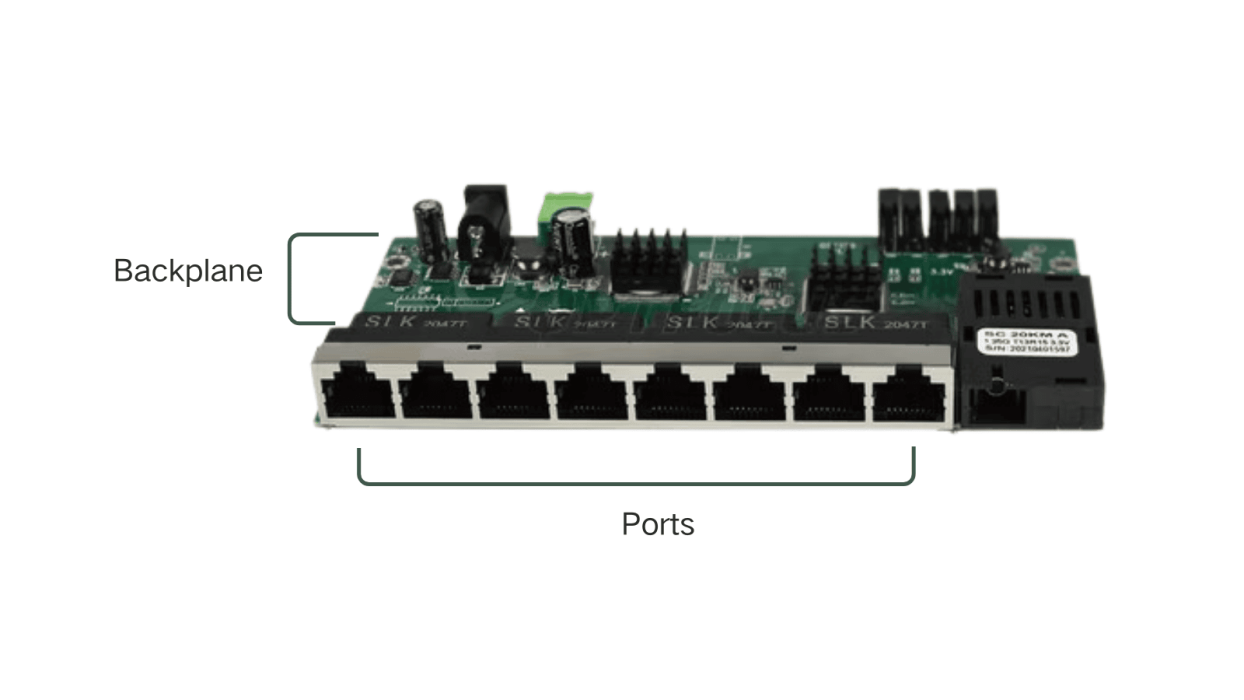
Performance will decrease if the data traffic exceeds the backplane’s bandwidth, even with high configurable speed. The larger the backplane bandwidth, the smoother the network will be when the multiple devices work together. Therefore, when choosing a switch, make sure its backplane bandwidth meets your network needs.
6. Forwarding Rate
Forwarding Rate is the numerical number of packets passing through the switch per second, and it measures how fast the switch can process and forward data. It is an important parameter of switch performance, and a higher forwarding rate means better performance. Most regular switches have a forwarding rate for home networks that meets performance needs.
10 Best Home Network Switch
1. The Best Home Network Switch for Beginners: TP-Link TL-SG105
What you need:
- Affordable price
- Enough configuration
- Easy to use
- Reliable warranty
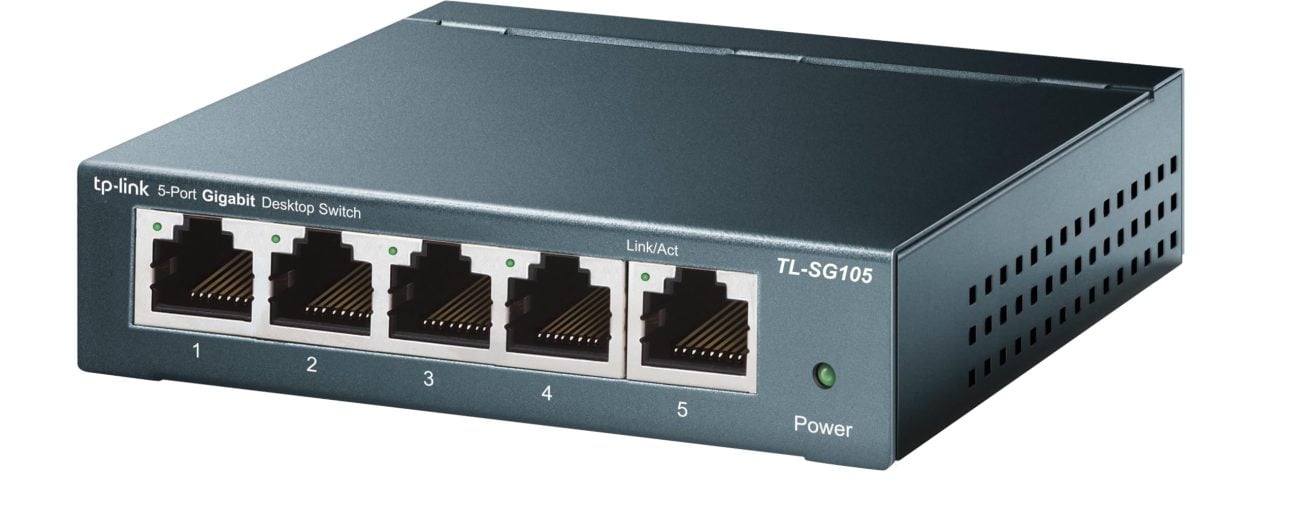
Key Features:
- 5 x Gigabit Ethernet ports
- Silent operation
- Plug-and-Play
- Cheap
- Reliable brand
Shortcoming:
- Limited functions
- Fewer ports
- Potential compatibility issue
2. The Best Home Network Switch for Smart Home: Ubiquiti USW-Pro-Max-16-PoE(180W)
What you need:
- High-Speed connectivity
- PoE support
- Advanced features
- Centralized control
- Flexible mounting option
Key Features:
- Etherlighting™ indicators
- 12 x 1GbE and 4 x 2.5GbE, 2 x 10G SFP+ ports
- Layer 3 Support
- 180W total PoE budget: 12 PoE+ 4 PoE++
- Fanless design for silent operation.
- desktop, wall, and rack-mountable
- UniFi Controller
Shortcoming:
- High price
- Inconvenient External Power Supply Unit (PSU)
3. The Best Home Network Switch for Home Office
What you need:
- Silent operation
- High-Speed connectivity
- Advanced features
The Best Home Network Switch for Home Office: NETGEAR GS108X
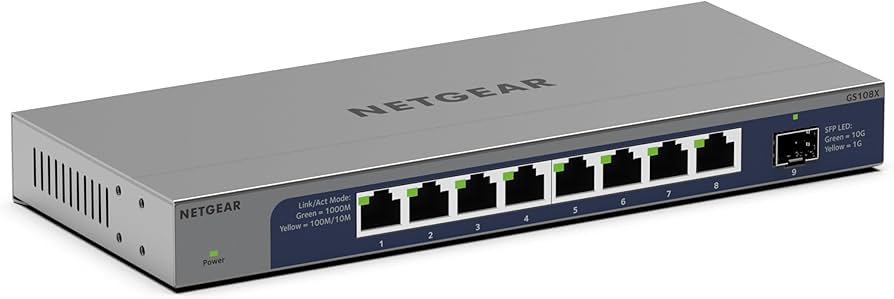
Key Features:
- 8 x Gigabit Ethernet ports 1 x 10G SFP+ port
- Fanless design for silent operation
- Desktop or wall-mountable
- Metal case for durability
Shortcoming:
- No PoE
- High Price
4. The Best Home Network Switch for Gaming
What you need:
- Quality of Service (QoS)
- High-Speed connectivity
- Silent operation
The Best Home Network Switch for Gaming: D-Link DMS-106XT
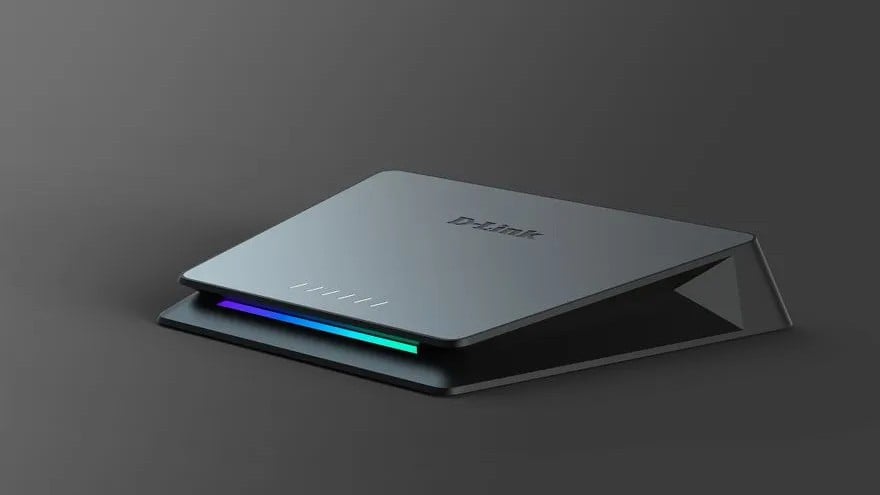
Key Features:
- 5 x Gigabit Ethernet ports 1 x 10G SFP+ port
- Turbo Mode for gaming
- Fanless design for silent operation
- Cool design with LED light bar
Shortcoming:
- Monotonous LED
- High price
- Fewer ports
5. The Best Home Network Switch for Cameras
What you need:
- PoE support
- High-Speed connectivity
The Best Home Network Switch for Cameras: NETGEAR MS108EUP
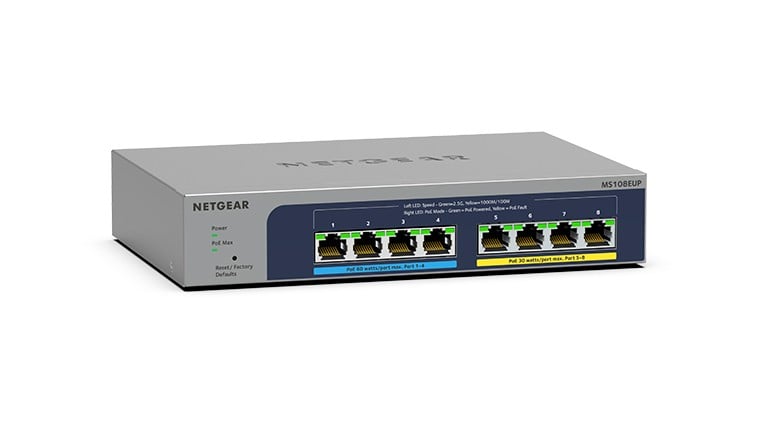
Key Features:
- 8 x 2.5 Gigabit Ethernet ports
- 4 PoE+ and 4 PoE++ ports, robust 230W budget
- Fanless design for silent operation
- VLANs and QoS
Shortcoming:
- No 10G port
- Large power adapter
6. The Best Home Network Switch for Future-proof
What you need:
- PoE support
- Multi-Gig
- Numerous ports
- Scalability
- Advanced features
The Best Home Network Switch for Future-proof: TP-Link Omada TL-SG3428XPP-M2
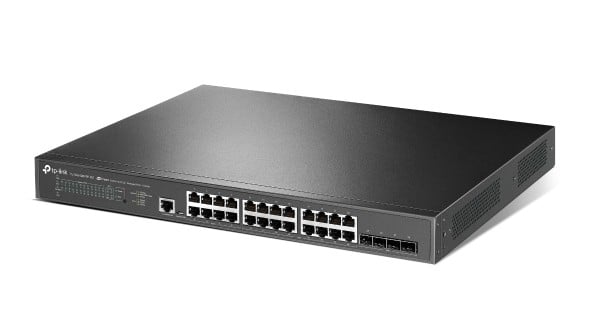
Key Features:
- 24 x 2.5GBASE-T ports and 4 x 10G SFP+
- 8 PoE++ and 16 PoE+ ports, 500W total budget
- Layer 3
- TL Omada SDN platform
- Sturdy metal case
Shortcoming:
- Noisy
- High power consumption
- High price
7. The Best Home Network Switch for Silent Operation
What you need:
- Silent operation
- Balanced connectivity
- Reliable
The Best Home Network Switch for Silent Operation: NETGEAR GS110TP
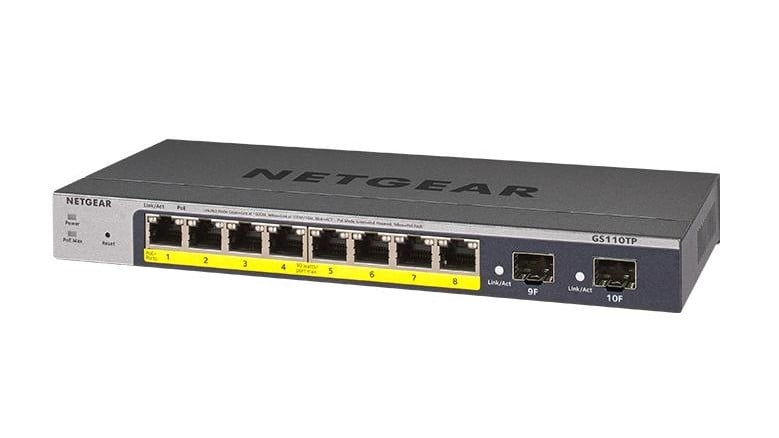
Key Features:
- 8 Gigabit Ethernet ports 2 x 1G SFP
- 8 x PoE+ 55W Total Budget
- Silent operation
- Comprehensive Layer 2+3 functions
- Durable build
Shortcoming:
- No 10G port
- Unfriendly management interface
8. The Best Home Network Switch for Power Saving
What you need:
- Energy efficiency
- Ease of use
- Compact design
The Best Home Network Switch for Power Saving: TRENDnet GREENnet TEG-S82G

Key Features:
- 8 x Gigabit Ethernet port
- GREENnet technology reduces power consumption by up to 70%
- Plug and play
- Metal case for durability
Shortcoming:
- Inconvenient LED indicator
- Poor warranty
9. The Best Mini Home Network Switch
What you need:
- Compact design
- Enough configuration
- Easy to use
The Best Mini Home Network Switch: Ubiquiti UniFi Flex Mini

Key Features:
- 5 x Gigabit Ethernet ports, 1 x PoE power input port
- Mini design
- Plug and play
- UniFi management
Shortcoming:
- Not PoE power supply
- Limited ports
- UniFi Ecosystem dependency
10. The Best Value for Money (VFM) Home Network Switch
What you need:
- Affordable
- Easy to use
- Enough configuration
The Best VFM Home Network Switch: TP-Link TL-SG108
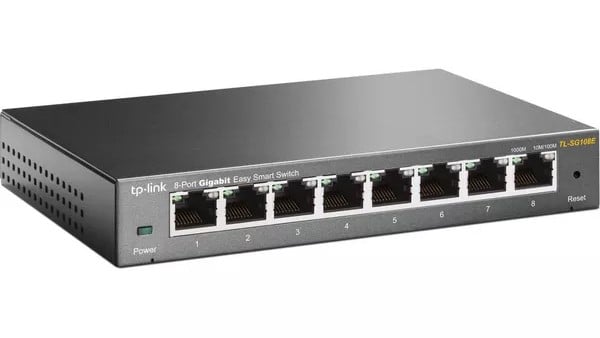
Key Features:
- 8 x Gigabit Ethernet ports
- Plug and Play
- Energy efficient
- Metal housing
- Cheap
Shortcoming:
- Limited functions
- Potential power loss issue
How to Deploy a Switch for a Home Network
For Unmanaged Network Switches
Power Up: Plug the switch into a power outlet.
Connect Devices: Plug Ethernet cables from your devices (like computers, gaming consoles, and smart TVs) into the switch ports.
Link to Router: Connect one port of the switch to a port on your router using an Ethernet cable. This allows all devices connected to the switch to access the internet.
Check Connectivity: Ensure the power and Ethernet lights are on and blinking. This indicates that the devices are properly connected and communicating.
For Managed Network Switches
Access Settings: Open a web browser on a connected device and enter the switch’s IP address (found in the manual) to access the settings page.
Login: Log in using the default username and password provided in the manual.
Basic Settings: Change the default password for security. If needed, set up VLANs to create separate networks for different devices.
Save Changes: Save your settings and restart the switch if necessary.
Above is the way to use WebUI, or you can also use mobile apps, such as UniFi and Omada, to implement settings and management.
FAQs
Q1: If I buy a switch, do I need a router?
Answer: Typically, you will still need a router to connect to the outside network. However, if you buy a layer 3 switch with routing and also have a modem, you may not need a router.
Q2: Can I use multiple switches in one network?
Answer: Yes, you can connect multiple switches to expand the number of available ports. Just ensure they’re all connected to the router or a central switch.
Q3: What is the difference between Gigabit and Multi-Gigabit ports?
Answer: Gigabit ports support speeds up to 1 Gbps. Multi-Gigabit ports can support higher speeds, such as 2.5G, 5G, or 10G, providing faster data transfer rates for high-performance networks.
Conclusion
Choosing the right network switch can significantly improve the performance and reliability of your home network.
From home office and smart home applications to performance needs like energy-saving and PoE, we’ve recommended the 10 best switches. By considering factors such as managed vs. unmanaged, port configuration, backplane bandwidth, and forwarding rate.
Read More:
Reference:






